Spectroscopy
Mass spectrometry is an analytical technique used to identify the chemical composition of a sample. The method typically works by bombarding a sample with electrons and breaking it into charged molecules or molecule fragments. These ionized particles are then separated, normally by accelerating them in an an electromagnetic field, and the mass to charge ratio for each compound is then determined. To detect the ionized particles an electron multiplier is normally used and the results are displayed as a spectra which plots the number of detected ions as a function of their mass to charge ratio. The electron multiplier plays a crucial role in detecting the ions and producing the electrical signals that need to be analyzed.
For situations that require fast and accurate capture of the electrical signals Spectrum has a range of digitizers that can be employed. For example, 8 bit digitizers are available that offer from 1.25 GS/s up to 5 GS/s sampling rates and 1.5 GHz bandwidth. These products are ideal for capturing and analyzing pulses that go down into the nano-second and sub-nanosecond region. The ultra-fast sampling rates also ensure excellent timing resolution in time-of-flight mass spectrometry systems (TOF-MS). When larger dynamic range and more sensitivity is required high-resolution 14 and 16 bit digitizers are available with sampling rates from 130 MS/s up to 500 MS/s. These high-resolution products deliver outstanding signal-to-noise ratio's (up to 72 dB) and spurious free dynamic range (of up to 90 dB) so that even the smallest signals can be detected and analyzed.
Small and compact the digitizers can be installed directly in any free PCIe slot in most modern PC's. They are equipped with ultra-fast trigger circuits so that the dead-time between acquisitions can be extremely small (down to as little as 16 ns). Together with large on-board memories (up to 4 GSamples/card) and advanced streaming and readout modes this makes the digitizers ideal for applications where acquisitions need to be made over long periods of time and where high trigger rates may be encountered. Data can be stored in the on-board memory or streamed in FIFO mode over the fast PCIe bus of the digitizer to a PC at rates up to 3.4 GB/s. To help with data analysis and data reduction Spectrum's M4i series of digitizers also feature on-board FPGA based processing functions that can be perform on-the-fly Averaging and Peak detection routines. Averaging a signal helps remove unwanted noise and improves sensitivity while Peak Detection can be used to help locate pulses and provide time interval analysis.
Each digitizer card can have from one to four channels and up to eight cards can be linked together with Spectrum's StarHub system to create instruments with up to 32 fully synchronous channels. The flexibility allows you to match your system perfectly whether it be for use with a single detector or for applications where multiple detectors and detector arrays are deployed.
To allow easy integration into mass spectrometry systems Spectrum makes available software and instrumentation drivers that work with 32 bit and 64 bit versions of Windows and Linux. Programming of the cards is possible using a wide range of languages such as LabVIEW, LabWindows/CVI, C++, MATLAB, Borland Delphi, Visual Basic, VB.NET, C#, J# and IVI.
Typical mass spectrometry applications include chemical analysis and life science measurements using TOF-MS (including MALDI-TOF), accelerator mass spectrometry (AMS), inductively coupled plasma mass spectrometry (ICP-MS) and thermal ionization mass spectrometry (TIMS). Mass spectrometry can also be combined with chromatographic compound separation methods such as liquid chromatography (LC-MS), gas chromatography (GC-MS) and ion mobility mass spectrometry (IM-MS).
Spectrum Product Features
- High Sampling Rates up to 10 GS/s and more than 1.5 GHz bandwidth
- 12, 14 and 16 bit Resolution
- Fast Trigger and Read-Out Rates
- External Clock and Reference Inputs
- FPGA based Block Average and Block Statistics (Peak Detect) Options
Matching Card Families
Related Documents
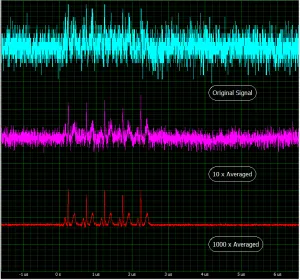
Using software based fast block averaging
The block, or segmented memory, averaging mode is used with Digitizers for different applications where incoherent noise needs to be removed from a signal. Independent of the manufacturer of the digitizer all FPGA based hardware implementations of the block averaging mode limit the maximum size of the segment to be averaged. The limit depends on the capacity of the FPGA and usually ranges from 32k up to 500k samples.
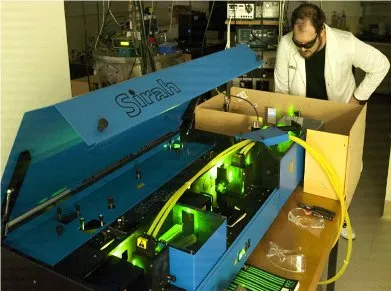
Case Study: REMPI Mass Spectrometry
The scientific field of Mass Spectrometry (MS) has been under constant research and development for over a hundred years, ever since scientists discovered that charged particles could be separated via electromagnetic fields based on their charge-to-mass ratio (Q/m). While spectrometry systems now come in numerous configurations their performance largely depends on a few fundamental elements. In the modern Mass Spectrometer this is normally the ion source (for exciting ions from the material under analysis), the mass analyzer, the particle detector and its associated electronics.
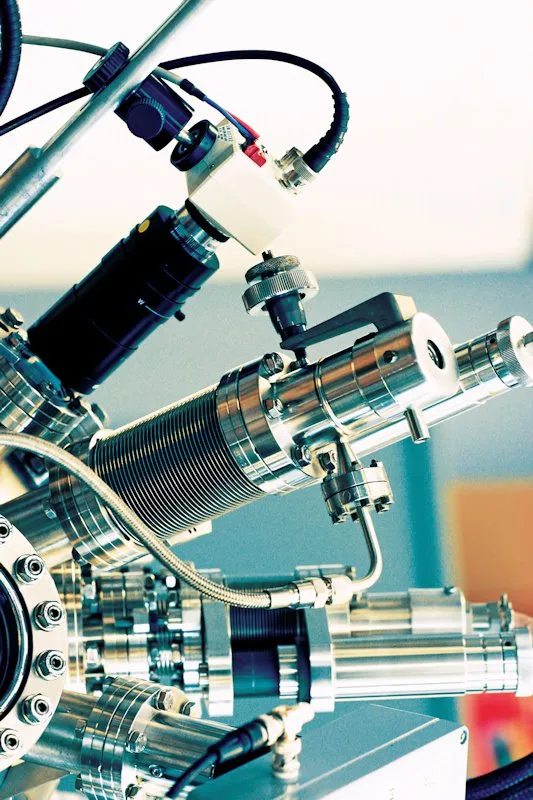
Mass Spectrometry and the Modern Digitizer
The scientific field of Mass Spectrometry (MS) has been under constant research and development for over a hundred years, ever since scientists discovered that charged particles could be separated via electromagnetic fields based on their charge-to-mass ratio (Q/m). While spectrometry systems now come in numerous configurations their performance largely depends on a few fundamental elements.
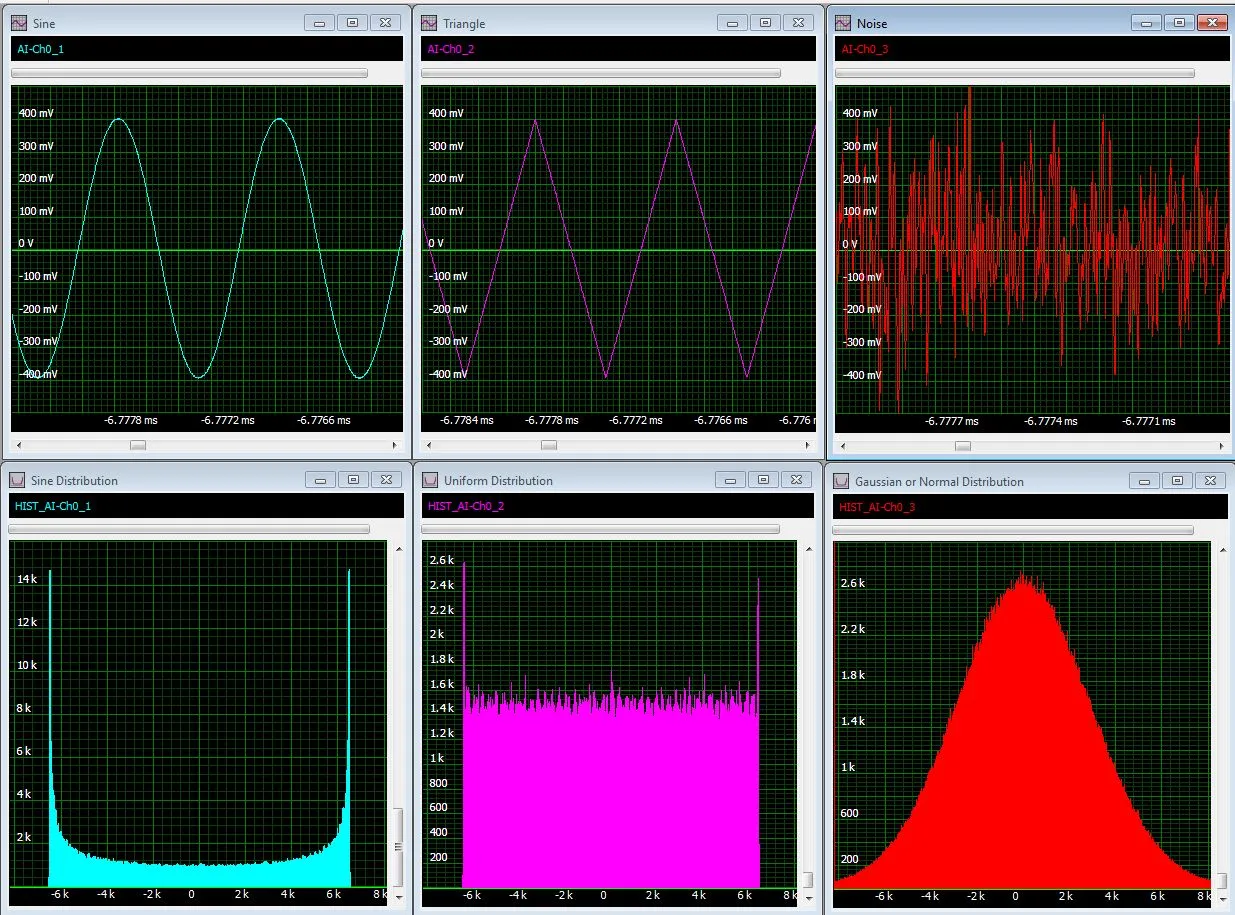
Signal Processing for Digitizers
Modular digitizers allow accurate, high resolution data acquisition that can be quickly transferred to a host computer. Signal processing functions, applied in the digitizer or in the host computer, permit the enhancement of the acquired data or the extraction of extremely useful information from a simple measurement.

Case Study: Groundbreaking microwave spectrometer for research of interstellar materials at Smithonian Institute
Microwave spectroscopy is a very powerful tool for discovering molecular structures and operates at very low temperatures near absolute zero (1 to 5 Kelvin). The spectrometers generally either operate with high sensitivity over a very narrow bandwidth or a wide frequency with reduced sensitivity. Researchers at the Harvard Smithsonian Center for Astrophysics have used a Spectrum Instrumentation digitizer card to create a next generation molecular spectrometer with both high resolution and high sensitivity that is capable of capturing sample data substantially faster.
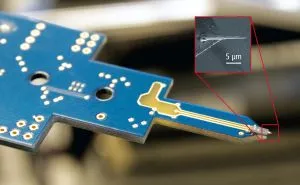
Case Study: Atomic Force Microscope (AFM) – Scanning Atoms
The Atomic Force Microscope (AFM) is an important tool in materials science and used for mechanical scanning of surfaces. The forces acting between the atoms of the surface and the tip of a nanoscopic needle are measured and calculated giving resolutions in the order of fractions of a nanometer. Now, the University of Newcastle in Australia is improving and simplifying these complex machines, so that a wider use in laboratories worldwide will be possible. In this sophisticated research, an 8-channel Spectrum digitizerNETBOX provides the high precision needed to push the evolution of AFMs
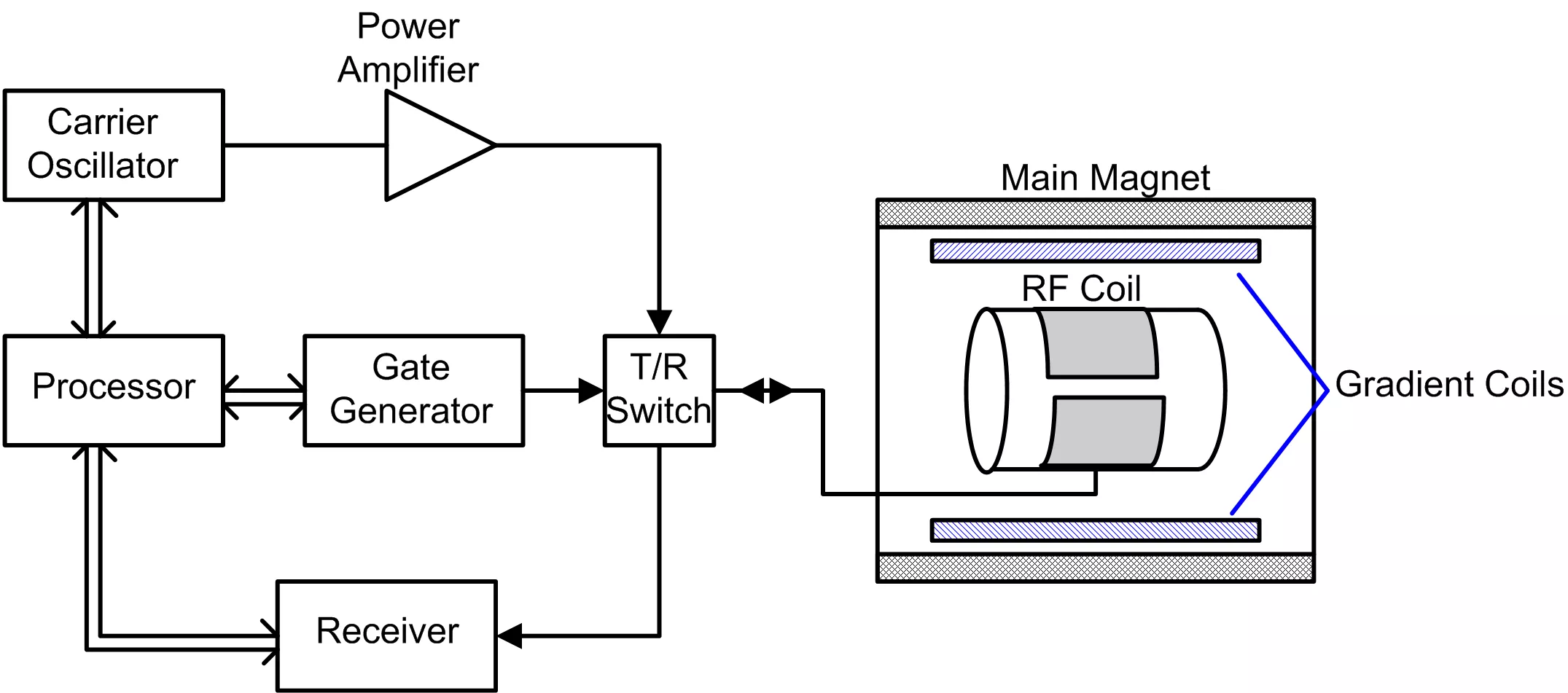
M5i.33xx - Pulse Burst RF Measurements for NMR, MRI and radar
Many RF systems operate using burst modes where radio frequency (RF) signals are transmitted for a short period. Examples of this kind of operation include echo-ranging applications like radar, magnetic resonance imaging (MRI) and relaxation radiation detection in nuclear magnetic resonance (NMR). These applications transmit a burst of relatively high-power RF and then wait for a return echo or a relaxation radiation signal. Measurement of this type of signal requires instruments with wide bandwidth, high sampling rate, long acquisition memory, fast processing, and high-speed data streaming.
Research Papers
Step-Scan Fourier Transform Infrared Spectroscopy
The Oklahoma State University, USA, has developed a system and method that improves the quality of step-scan Fourier Transform Infrared spectroscopy data by improved removal of dark voltage. The experimentation uses a digitizerNETBOX DN2.441-02 that can acquire signals by sampling them at rates up to 130 MS/s with 16 bit resolution. A patent application outlining the scope of the work is available below
Patent ApplicationPhotolysis of Formic Acid
The Department of Chemistry, National Taiwan University, in Taiwan are studying the roaming dynamics and conformational memory in photolysis of formic acid. They use an M4i.4410-x8, 130 MS/s, 16 bit, Digitizer for data acquisition in their Time-resolved Fourier-transform Infrared Emission Spectroscopy system. A research paper on the topic can be found below
Research PaperBiomedical Laser Spectroscopy
At the Norwegian University of Science and Technology they are using an eight channel M2p.5946-x4 80 MS/s, 16 bit, digitizer card as part of their studies into biomedical laser spectroscopy. The development of a Mid-Infrared Laser Spectroscopy for Glucose Sensing is discussed here:
Research PaperBreath Gas Analysis
See how a Spectrum M2i.4963-exp digitizer card, programmed under LabVIEW, is used at the Department of Applied Physics and Electronics, Umeå University, Umeå Sweden, in an EC‑QCL (external cavity – quantum cascade laser) system for real‑time breath gas analysis of CO and CO2 by clicking the link here:
Reserach PaperOptical Feedback Cavity Ring-Down
The Institute of Optics and Electronics, Chinese Academy of Sciences, Chengdu, China, uses both a Spectrum 14 bit AWG M2i.6021 and 12 bit digitizer M2i.3010 as key elements in their experimental Optical Feedback Cavity Ring-Down (OF-CRD) system. Learn how signal processing can help extract low signal-to-noise ratio signals by clicking here:
Research PaperDual-comb Spectroscopy System
At the Division of Advanced Manufacturing, Tsinghua University, China, they are developing ways to lower the cost of Dual-comb Spectroscopy systems. A new approach uses an M4i.4420-x8 250 MS/s, 16-bit Digitizer to acquire signals and passes the data to a computer where it is analysed using a simple frequency domain post-processing method. A white paper explaining their system and the process can be found below
Research PaperFTIR Spectroscopy for Protein-Membrane Interactions
At the University of Konstanz a fast high resolution Spectrum M2p.5960-x4 digitizer provides nanosecond time-resolution in an FTIR spectroscopy system that’s used to investigate protein-membrane interactions. See the full details here:
Research PaperElectron Spin Resonance (ESR)
Electron Spin Resonance (ESR) is a key technique for the study of the structure and dynamics of molecular systems. At the Walter Schottky Institute of the Technical University Munich they are using a Spectrum M4i.4451-x8 digitizer card to help detect, acquire and analyze spin echoes in a pulsed ESR system. A white paper summarizing the experimental setup and results is available here:
Research PaperDirect-Comp Spectroscopy
The Department of Physics, Keio University, Japan is using an M4i.2230-x8 5 GS/s Digitizer for high speed data acquisition with fast time domain averaging to perform scan-free high-resolution direct-comb spectroscopy where the mode spacing of an optical frequency comb is reduced down to 260 kHz by phase modulation. Details on the development can be found here:
Research PaperUltrafast Spectroscopy
At the Technical University of Dortmund, Germany, they are using a 5 GS/s M4i.2234-x8 Digitizer in nonstationary quantum state tomography, adapting the technique to the special requirements of ultrafast spectroscopy. A white paper on the topic can be found here:
White PaperTerahertz Time-Domain Spectroscopy
Terahertz spectroscopy has become an important tool for investigations of low-frequency optical responses in condensed matter physics. At Keio University, Yokohama, Japan they have developed a polarization-sensitive terahertz time-domain spectroscopy system without mechanical moving parts. The system uses an M2p.5962-x4 125 MS/s, 16-bit Digitizer for signal acquisition and a white paper discussing the development can be found here:
White PaperOptical Frequency Combs in Spectroscopy
The optical frequency comb (OFC) technique enables high-precision optical metrology which has found application in many scientific areas, such as molecular spectroscopy, astronomy, and particle physics. At Keio University, Yokohama, Japan they have demonstrated a measurement protocol that enables determination of the absolute mode numbers of both OFCs in a dual-comb spectroscopy system. The system uses an M2p.5962-x4 125 MS/s, 16-bit Digitizer for signal acquisition. A research paper on the development can be found here
Research PaperHigh-Resolution Dual Comb Spectroscopy
At the University of Lyon, France, they have developed a bidirectional DC spectrometer (BD-DCS) that allows for the observation of the line-resolved molecular absorption spectrum in a broad spectral range. Signals from an Si-photodetector in the system are acquired using an M4i.4450-x8 500 MS/s, 14-bit Digitizer. A paper describing the BD-DCS and the high-resolution measurements made can be found here:
Research PaperRadio-frequency optically pumped magnetometers (RF OPMs)
At the University of Nottingham, UK, they are developing Radio-frequency optically pumped magnetometers (RF OPMs) that are capable of measuring oscillating magnetic fields with high sensitivity in the fT/√Hz range. A PhD thesis discussing two different RF OPMs is available under below link. In the experimental testing an M2p.5932-x4 40 MS/s, 16-bit Digitizer is used as part of the absorption spectroscopy system needed to understand the hyperfine structures
Experimet TestingCavity ring-down Spectroscopy
The Information Materials and Intelligent Sensing Laboratory of Anhui Province, Anhui University, China is using an M2p.5941-x4, 80 MS/s, 16-bit Digitizer as part of their research into the development of a CNN-assisted mid-infrared high-sensitivity exhaled ammonia sensor based on cavity ring-down spectroscopy. A reference paper on the work is available below:
Reference Paper